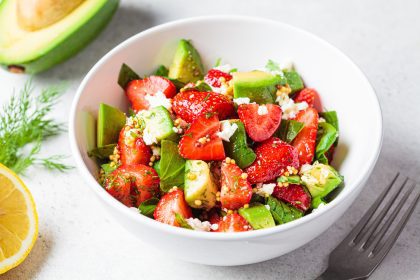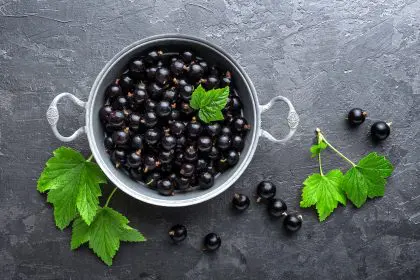Your stomach starts growling at 3 PM, and suddenly that bag of chips in the office kitchen becomes irresistible. Sound familiar? The battle between hunger and healthy eating doesn’t have to end in defeat. The secret lies in choosing foods that work with your body’s natural hunger signals rather than against them.
These ten remarkable foods pack maximum satisfaction into minimal calories, creating the perfect storm for weight management success. They’re not just low in calories—they’re scientifically designed by nature to trigger fullness hormones, stabilize blood sugar, and keep cravings at bay for hours rather than minutes.
The key to lasting hunger control isn’t about eating less—it’s about eating smarter. These foods demonstrate that you can feel completely satisfied while supporting your health goals, proving that effective weight management doesn’t require constant deprivation or willpower battles.
Understanding how these foods work in your body transforms the way you approach eating, turning every meal and snack into an opportunity to feel energized, satisfied, and in control of your appetite.
The science behind hunger-crushing foods
Your brain receives hunger and fullness signals through a complex network of hormones that respond to different types of nutrients in predictable ways. Protein triggers the release of hormones like GLP-1 and peptide YY that signal satiety to your brain, while fiber creates physical fullness and slows digestion to extend satisfaction.
Water content in foods plays a crucial role in creating the sensation of fullness without adding calories. Foods with high water content take up significant space in your stomach, triggering stretch receptors that send fullness signals to your brain before you’ve consumed many calories.
The thermic effect of certain foods means your body burns calories just to digest them, creating a metabolic advantage that supports weight management goals. Protein has the highest thermic effect, requiring up to 30 percent of its calories just for digestion and processing.
Blood sugar stability prevents the dramatic crashes that trigger intense cravings and overeating episodes. Foods that provide steady glucose release help maintain consistent energy levels and reduce the psychological drive to seek quick energy from high-calorie snacks.
1. Eggs: The appetite control champions
Eggs deliver unmatched hunger-fighting power through their complete protein profile and essential nutrients that work synergistically to control appetite. A single large egg contains just 72 calories but provides six grams of high-quality protein that triggers powerful satiety signals in your brain.
The protein in eggs stimulates the production of hormones that communicate fullness to your hypothalamus, the brain region responsible for appetite regulation. This hormonal response can reduce food intake at subsequent meals, creating natural portion control that doesn’t require conscious effort or willpower.
Eggs also contain choline, a nutrient that supports brain function and may influence appetite regulation through neurotransmitter production. The combination of protein, healthy fats, and essential nutrients creates sustained energy that prevents the blood sugar crashes often responsible for mid-morning or afternoon cravings.
Research consistently shows that people who eat eggs for breakfast consume fewer calories throughout the day compared to those who start with carbohydrate-heavy meals. This appetite-suppressing effect can last for hours, making eggs one of the most effective natural appetite control tools available.
2. Greek yogurt: The probiotic powerhouse
Low-fat Greek yogurt transforms ordinary dairy into a hunger-fighting superfood through its concentrated protein content and beneficial bacteria that support digestive health. A seven-ounce serving contains approximately 146 calories but delivers nearly 20 grams of protein—more than double that of regular yogurt.
The casein and whey proteins in Greek yogurt digest at different rates, providing both immediate and sustained amino acid release that maintains stable blood sugar levels and prolonged satiety. This dual-action protein system helps prevent the energy crashes that typically trigger snack attacks.
The probiotics in Greek yogurt support a healthy gut microbiome that influences hunger and satiety hormone production. Emerging research suggests that beneficial gut bacteria play crucial roles in appetite regulation and may help reduce cravings for high-calorie, processed foods.
Greek yogurt’s thick, creamy texture requires more chewing and eating time than liquid calories, activating mechanical satiety signals that help your brain register fullness more effectively. This physical satisfaction component adds another layer of appetite control beyond the nutritional benefits.
3. Cottage cheese: The muscle-preserving hunger stopper
Cottage cheese provides exceptional hunger control through its impressive protein density, delivering approximately 25 grams of protein per cup for just 180 calories. This protein concentration makes it one of the most efficient hunger-fighting foods available per calorie invested.
The casein protein in cottage cheese digests slowly, providing a steady stream of amino acids that maintains satiety for extended periods. This slow-release characteristic makes cottage cheese particularly effective for preventing late-night cravings and supporting overnight muscle recovery.
Cottage cheese’s high protein content helps preserve lean muscle mass during weight loss, which maintains metabolic rate and prevents the metabolic slowdown that often accompanies calorie reduction. This muscle-preserving effect supports long-term weight management success.
The versatility of cottage cheese allows it to satisfy both sweet and savory cravings depending on how it’s prepared. Whether paired with berries for a dessert-like treat or mixed with herbs for a savory snack, cottage cheese adapts to different flavor preferences while maintaining its hunger-fighting properties.
4. Leafy greens: The volume champions
Leafy greens like spinach, kale, and romaine lettuce provide maximum stomach-filling volume for minimal calories, with most varieties containing just five to nine calories per cup. This exceptional calorie-to-volume ratio allows you to eat large, satisfying portions without deriving your calorie budget.
The fiber content in leafy greens slows digestion and creates physical fullness that triggers stretch receptors in your stomach. These mechanical signals communicate satiety to your brain independently of calorie intake, allowing you to feel genuinely full on fewer calories.
Leafy greens are packed with nutrients including vitamins K, C, and A, along with folate and minerals that support overall health and energy production. This nutrient density ensures that your body receives essential vitamins and minerals even when reducing overall calorie intake.
The water content in fresh leafy greens contributes additional volume without calories while supporting hydration needs. Proper hydration supports appetite regulation and can help distinguish between true hunger and thirst, preventing unnecessary snacking.
5. Air-popped popcorn: The guilt-free crunch
Air-popped popcorn delivers satisfying crunch and fiber for just 30 calories per cup, making it an ideal snack for satisfying the desire for something crunchy without derailing weight management goals. The fiber content helps slow digestion and promote feelings of fullness.
Popcorn is a whole grain that provides complex carbohydrates for steady energy release without the blood sugar spikes associated with refined snack foods. This stable energy helps prevent the crash-and-crave cycle that leads to overeating processed snacks.
The act of eating popcorn kernel by kernel naturally slows consumption and allows satiety signals time to reach your brain before you’ve consumed too many calories. This mindful eating aspect helps prevent the unconscious overconsumption common with other snack foods.
Popcorn’s versatility allows for creative seasoning options that satisfy different flavor cravings without adding significant calories. Herbs, spices, and small amounts of nutritional yeast can transform plain popcorn into a gourmet snack that feels indulgent while remaining calorie-conscious.
6. Oatmeal: The sustained energy provider
Oatmeal provides exceptional hunger control through its soluble fiber content, particularly beta-glucan, which forms a gel-like substance in your digestive system that slows nutrient absorption and extends satiety. A half-cup serving contains about 150 calories but delivers 13 percent of your daily fiber needs.
The complex carbohydrates in oats provide steady glucose release that maintains stable blood sugar levels throughout the morning, preventing the energy crashes that typically trigger mid-morning snack cravings. This sustained energy release supports consistent appetite control.
Oatmeal’s thick, hearty texture requires thorough chewing that activates satiety signals in your brain while slowing consumption to allow fullness hormones time to take effect. The warm temperature and substantial mouthfeel contribute to psychological satisfaction that helps prevent overeating.
The versatility of oatmeal allows for endless customization with low-calorie additions like berries, cinnamon, or small amounts of nuts that enhance flavor and nutrition without significantly increasing calorie content. This adaptability prevents boredom while maintaining hunger control benefits.
7. Berries: The antioxidant satisfaction solution
Berries provide natural sweetness and satisfaction for just 30 to 40 calories per half-cup serving while delivering powerful antioxidants and fiber that support both appetite control and overall health. Their natural sugars satisfy sweet cravings without triggering blood sugar spikes.
The fiber and water content in berries create physical fullness that helps control portion sizes naturally. Unlike processed sweets that can trigger overeating, berries provide natural stopping points that align with your body’s satiety signals.
Berries are rich in anthocyanins and other antioxidants that may influence metabolism and fat storage processes. While research is ongoing, these compounds appear to support healthy weight management through multiple pathways beyond simple calorie control.
The variety of berries available ensures year-round access to different flavors and textures that prevent boredom while maintaining the appetite control benefits. Frozen berries provide the same nutritional benefits as fresh varieties, making them accessible and affordable options.
8. Watermelon: The hydrating hunger fighter
Watermelon’s exceptional water content—over 90 percent—provides substantial volume and satisfaction for just 25 calories per half-cup serving. This high water content helps fill your stomach while contributing to hydration needs that support proper appetite regulation.
The natural sugars in watermelon provide quick energy satisfaction without the blood sugar rollercoaster associated with processed sweets. The fiber content, while modest, helps slow sugar absorption and contribute to overall daily fiber intake.
Watermelon contains lycopene, a powerful antioxidant that supports cardiovascular health and may influence metabolic processes. The combination of hydration, natural sweetness, and beneficial compounds makes watermelon an ideal snack for weight management.
The refreshing nature of watermelon makes it particularly satisfying during warm weather when heavier foods may feel less appealing. This seasonal satisfaction helps maintain healthy eating patterns year-round by providing appropriate options for different weather conditions.
9. Celery: The negative calorie myth buster
While celery doesn’t actually burn more calories than it provides, its extremely low calorie content—just 18 calories for two large stalks—combined with high water content and fiber makes it an excellent choice for volume eating and hunger control.
Celery’s crunchy texture provides mechanical satisfaction that helps address the psychological need to chew and consume something substantial. This textural component of satisfaction is often overlooked but plays important roles in appetite control and eating satisfaction.
The natural sodium content in celery can help satisfy salt cravings in a healthful way, potentially reducing the desire for processed salty snacks that are typically much higher in calories. This natural saltiness combined with crunch makes celery surprisingly satisfying.
Celery serves as an excellent vehicle for small amounts of protein-rich foods like nut butters or hummus, creating balanced mini-meals that provide sustained satisfaction while keeping overall calories moderate.
10. Zucchini: The versatile volume builder
Zucchini’s mild flavor and high water content—over 90 percent—make it an excellent addition to meals for increasing volume and satisfaction without significantly increasing calories. One cup of sliced zucchini contains just 27 calories while providing fiber, vitamin C, and potassium.
The versatility of zucchini allows it to be incorporated into both sweet and savory dishes, from zucchini noodles that replace high-calorie pasta to zucchini bread that satisfies dessert cravings. This adaptability makes it easy to increase meal volume consistently.
Zucchini’s subtle flavor doesn’t compete with other ingredients, making it an ideal base for flavor combinations that satisfy various cravings while maintaining low calorie density. It effectively carries other flavors while contributing bulk and nutrition.
The fiber content in zucchini supports digestive health and contributes to the overall fiber intake that promotes satiety and stable blood sugar levels. Regular consumption of fiber-rich vegetables like zucchini supports long-term appetite regulation.
Maximizing hunger control strategies
Combining these low-calorie foods strategically throughout the day creates powerful appetite control that supports sustainable weight management without constant hunger or deprivation. Understanding how to pair these foods maximizes their individual benefits while creating satisfying meals and snacks.
Timing consumption of protein-rich options like eggs, Greek yogurt, and cottage cheese at the beginning of meals helps trigger early satiety signals that naturally reduce overall food intake. This front-loading strategy works with your body’s hormone systems rather than against them.
Incorporating high-volume, low-calorie foods like leafy greens and zucchini into meals allows for larger portion sizes that provide psychological satisfaction while maintaining calorie control. This volume strategy addresses both physical and mental aspects of hunger satisfaction.
Preparing these foods in advance ensures availability during high-hunger periods when poor food choices become more tempting. Having hunger-fighting options readily available prevents reliance on processed foods that typically provide fewer satisfaction per calorie consumed.
Creating sustainable eating patterns
Success with low-calorie hunger control requires creating sustainable patterns that can be maintained long-term rather than short-term restriction approaches that typically backfire. These foods provide the foundation for eating patterns that feel abundant rather than limiting.
Understanding that effective appetite control comes from food quality rather than just quantity helps shift focus from deprivation to nourishment. This mindset change supports long-term success by making healthy choices feel positive rather than punitive.
Building meals around these hunger-fighting foods while allowing flexibility for other enjoyed foods creates balance that supports both physical health and psychological wellbeing. Rigid approaches often fail because they don’t account for the social and emotional aspects of eating.
Regular consumption of these low-calorie, high-satisfaction foods gradually retrains your palate and hunger signals to appreciate nutrient-dense options while reducing cravings for processed, high-calorie alternatives that provide less lasting satisfaction.


















